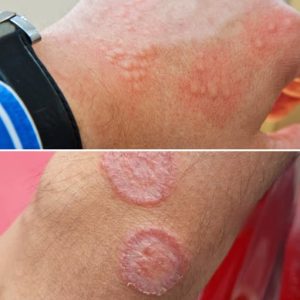Groin skin irritation is common and can stem from several causes like friction, moisture, and hair removal. One frequent issue is ingrown hairs, where hair grows back into the skin, causing red, itchy bumps that can become infected. Shaving, waxing, or tight clothes often trigger this. Treatment involves warm compresses, gentle exfoliation, and pausing hair removal until healed.
Another cause is folliculitis, inflammation of hair follicles due to bacteria, fungi, or irritation. It appears as red or white bumps that may itch or hurt. Tight clothing, shaving, or contaminated water can cause it. Mild cases improve with antibacterial soaps or topical ointments; severe ones might need oral antibiotics.
Tinea cruris (jock itch) is a fungal infection common in warm, moist areas like the groin and inner thighs. Symptoms include red, scaly patches and persistent itching or burning. Treatment focuses on keeping the area dry, wearing breathable clothes, and using antifungal creams.
Contact dermatitis happens when skin reacts to soaps, detergents, or fabrics, causing redness, itching, or blisters. Avoiding irritants, switching to fragrance-free products, and applying hydrocortisone cream helps reduce symptoms.
Intertrigo occurs in skin folds from moisture and friction, leading to redness, soreness, and sometimes odor. Managing it involves keeping the area dry, using barrier creams, and treating infections if needed.
Prevention includes good hygiene: clean and dry the groin after sweating or bathing, wear loose, breathable fabrics, and avoid synthetic materials that trap heat and sweat. Seek medical help if irritation worsens, spreads, or is accompanied by fever or swelling.




